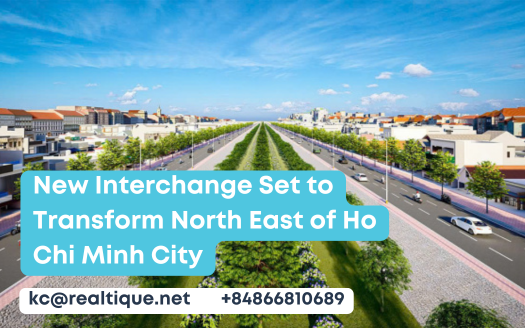New Interchange Set to Transform North East of Ho Chi Minh City
The forthcoming North East interchange in Ho Chi Minh City represents a significant advancement in urban infrastructure, ready to enhance traffic flow and connectivity within the region. With its innovative four-level design, which includes an underground tunnel and dual raised roadways, the project aims to accommodate over 4,500 vehicles per hour. Scheduled to break ground in 2025 and reach completion by 2027, this development promises to alleviate congestion and improve access to key locations, notably Tan Son Nhat airport. As we investigate the implications of this initiative, it becomes essential to consider what this means for the city’s future.
Table of Contents
Project Overview
The upcoming construction of the North East interchange in Ho Chi Minh City represents a significant advancement in urban infrastructure aimed at enhancing traffic flow in the area.
This ambitious project involves the development of a 4-level interchange at the North East intersection, featuring an underground tunnel and two raised roadways. The initiative has received approval from Ho Chi Minh City authorities, following a thorough proposal from the Department of Transport.
The interchange is strategically embedded within the larger Ring Road 2 construction project, which aims to improve connectivity throughout the city.
Design and Structure
At the heart of the North East interchange project lies a carefully planned design that prioritizes effective traffic management.
The interchange will feature a four-level structure, facilitating seamless movement across multiple roadways. The first level comprises two raised bridges: Bridge 1, with two branches accommodating six lanes, and Bridge 2, offering two additional lanes.
Bridge 1 will span over key arterial routes, including Linh Dong, Pham Van Dong, Kha Van Can roads, Rach cannel. A secondary bridge is also planned to enhance connectivity between Pham Van Dong and Tan Son Nhat airport.
This design aims to efficiently manage high traffic volumes, projected to exceed 4,500 vehicles per hour, ensuring improved accessibility and reduced congestion in the area.
Scheduled to begin in 2025, the construction of the North East interchange is set to unfold in multiple phases, aligning with the broader development of Ring Road 2. The project is expected to span two years, with completion anticipated by 2027.
Initial phases will focus on the groundwork and the establishment of supporting infrastructure. As the project progresses, construction of the underground tunnel will commence, enhancing the interchange’s capacity and functionality.
Current activities are concentrated on completing other segments of Ring Road 2, ensuring a seamless integration of the interchange into the overall traffic management system.
This strategic timeline highlights the commitment to improving traffic flow and accessibility in Ho Chi Minh City, setting the stage for future urban development.
Traffic Impact and Benefits
A significant reduction in traffic congestion is anticipated with the construction of the North East interchange, which is specifically designed to enhance traffic management at this critical intersection. This project will not only alleviate current congestion but also facilitate smoother access to Tan Son Nhat airport and improve connectivity among various districts in Ho Chi Minh City. Commuters can expect a decrease in travel time, showcasing the interchange’s potential to support future traffic growth and urban expansion.
| Benefit | Description | Impact |
|---|---|---|
| Reduced Congestion | Alleviates traffic buildup at the intersection | Improved traffic flow |
| Enhanced Access | Direct routes to Tan Son Nhat airport | Quicker airport access |
| District Connectivity | Improved connections among Ho Chi Minh City districts | Increased mobility |
| Travel Time Reduction | Decreased commute times for local travelers | More efficient travel |
| Future Growth | Designed to accommodate urban expansion | Sustainable development |
Related Infrastructure Developments
Developing the Ring Road 2 network is crucial for enhancing transportation efficiency in Ho Chi Minh City, and the North East interchange plays an important role within this broader infrastructure initiative.
The Ring Road 2 is divided into several segments, with ongoing construction efforts to complete each portion. Notably, Segment 1 extends 3.5 km from Phu Huu Bridge to Vo Nguyen Giap Road, while Segment 3 connects Pham Van Dong to the Go Dua interchange.
Additionally, Segment 4, measuring 5.3 km, will link National Highway 1 through Nguyen Van Linh Road. The timely completion of these segments is essential for the overall functionality of the Ring Road network, ensuring seamless connectivity and improved traffic management throughout Ho Chi Minh City.





